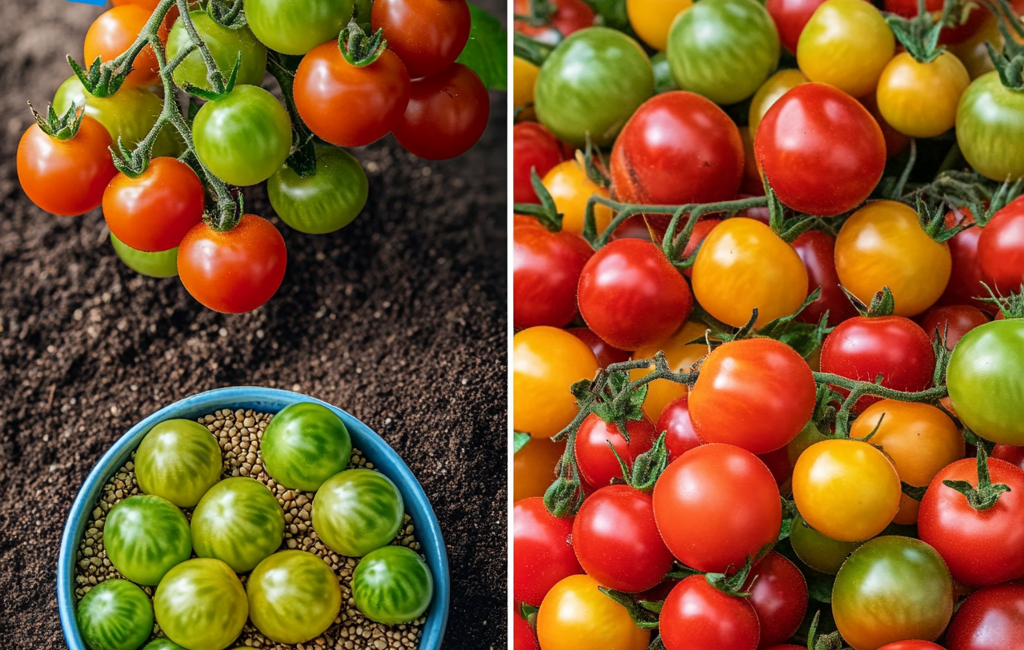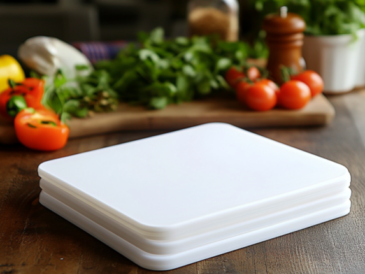Gardening is a labor of love, often rewarded with a bounty of fresh produce. Among the many wonders of the garden, tomatoes hold a special place, cherished for their versatility and the joy they bring to both the table and the soul. But as you continue your gardening journey, why not explore a new, unconventional way to propagate these beloved fruits? This simple method—using nothing more than a tomato slice—could revolutionize the way you grow tomatoes, offering an easy and nearly miraculous approach to gardening.
Part 1: The Miracle of Growing Tomatoes from Slices
1. Why Tomato Slices? The Magic Behind the Method
Most gardeners are familiar with traditional methods of growing tomatoes, either by saving seeds from last year’s crop or by purchasing seedlings from a nursery. However, there’s a lesser-known technique that’s so simple, it almost feels like magic: growing tomatoes from a single slice.
- Natural Propagation: Tomato slices contain all the seeds you need to start new plants, along with the surrounding flesh that helps sustain the seeds during their initial growth.
- Easy and Efficient: This method eliminates the need for intricate seed-saving processes or trips to the nursery. You can start new plants directly from the tomatoes you already have in your kitchen.
- Faster Germination: The flesh of the tomato slice provides a moist, nutrient-rich environment that encourages quicker germination and healthier seedlings.
🌱 Pro Tip: This method is especially useful if you’ve found a tomato variety you love and want to replicate it without the hassle of saving seeds.
2. What You Need to Get Started
Before you dive into this gardening adventure, gather the following materials:
- Ripe Tomato: Choose a tomato variety that you adore, and make sure it’s fully ripe. The ripeness ensures that the seeds are mature and ready to germinate.
- Potting Soil: Use a high-quality, loose, and well-draining potting soil to give your seeds the best start.
- Container or Garden Plot: You can use a small plot of land in your garden or a container with good drainage. Both work well for this method.
🍅 Tomato Selection Tip: Heirloom tomatoes are particularly good for this method, as they tend to have more seeds and a rich flavor profile that’s worth preserving.
3. Step-by-Step Guide to Growing Tomatoes from Slices
Ready to grow your tomatoes in a whole new way? Here’s how to do it:
Step 1: Slice the Tomato
- Using a sharp knife, carefully slice your ripe tomato into quarter-inch thick pieces. This thickness is key—it provides enough flesh around the seeds to nourish them as they begin to sprout.
Step 2: Prepare the Soil
- Fill your container or garden plot with loose, well-draining potting soil. This type of soil creates the perfect environment for seed germination, allowing the roots to spread easily.
Step 3: Plant the Slices
- Lay the tomato slices directly on top of the prepared soil. Gently cover them with a light layer of soil, just enough to hide them from view but not so deep that the seeds struggle to sprout. The thin layer of soil will keep the slices moist and protected as the seeds begin to grow.
Step 4: Water the Soil
- Water the soil gently but thoroughly, ensuring that it stays consistently moist. Avoid waterlogging the soil, as this can lead to rot. In a week or two, you should start to see tiny seedlings pushing through the soil.
Step 5: Care for the Sprouts
- As the seedlings grow, they’ll develop their first set of true leaves. Once they reach a few inches in height, it’s time to thin them out. Select the healthiest seedlings for transplanting, and carefully remove the others to give the chosen plants room to grow.
Step 6: Transplant the Seedlings
- The remaining seedlings can now be transplanted into individual containers or spaced out in your garden. Ensure they’re planted in an area with plenty of sunlight and well-drained soil for optimal growth.
🌞 Sunlight Tip: Tomato plants thrive in full sun, so make sure they get at least 6-8 hours of sunlight each day for the best results.
Keep reading to discover how to nurture your tomato plants and ensure a bountiful harvest in Part 2!
Part 2: Caring for Your Tomato Plants and Harvesting




